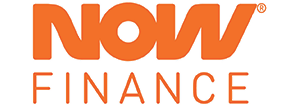
Having a bad credit history can severely limit your financial opportunities. Securing loans, renting property, or accessing favourable interest rates becomes significantly harder. Even getting approved for a credit card can feel like an uphill battle and borrowing becomes costlier. It can also limit your access to utilities, services, and, in some cases, jobs.
The repercussions of a bad credit history extend beyond just finances, influencing housing, employment, and overall quality of life. It's easy to feel hopeless if you worry that a poor credit history is something you can't recover from.
Take note!
Legitimate negative remarks such as defaults and bankruptcies stay on your credit report for five to seven years.
What is considered a bad credit history?
A credit history is considered bad if the record shows an individual has struggled to meet their financial obligations.
Credit history is a section within the credit report that focuses on your borrowing and repayment activities over time. A bad credit history can include missed credit card or loan payments, defaults on utility bills, court judgments for unpaid debts, or filing for bankruptcy.
Basically, a bad credit history demonstrates that your financial behaviour and overall reliability are less than ideal compared to what lenders would prefer.
Your overall creditworthiness is represented by your credit score, which is calculated based on the data in your credit report. In Australia, credit scores typically range from 0 to 1,200, depending on the reporting agency.
See Also: Understanding Your Credit Score
Anywhere between 833 to 1,200 (if you're using Equifax; 1,000 with Experian and Illion) is considered an excellent score. A score below 400 is generally regarded as poor. However, a poor credit score doesn't necessarily indicate a bad credit history, it may simply mean you've never used credit before.
Suppose your poor score is due to a lack of credit history. You can fix your credit rating by establishing a record of responsible credit use:
-
Pay your bills on time.
-
Take out a small loan and repay it promptly.
-
Open a low-rate credit card and use less than 30% of the limit.
How to fix a bad credit history
You can't rewrite the past, but you can actively work to improve your credit history moving forward or fix it, if possible. And the good news is, old negative entries will expire over time, and consistent positive behaviour helps rebuild your reputation.
Here are the ways you can do to fix a bad credit history:
1. Review your credit report
Access your free annual credit report from any official Australian credit reporting body to review for any inaccuracies. While you cannot request to change or delete any correct entries (only time will do that), you can dispute any wrong listings, such as incorrectly listed defaults or duplicate entries.
Regularly checking your report also enables you to see where you're going wrong so that you can concentrate on improving these areas.
2. Pay bills on time
Automate payments for utilities, credit cards, and other bills to avoid missing due dates. You can set up direct debits to settle payments on time.
If you're struggling to meet payment deadlines, you may contact your service providers to negotiate a manageable payment plan or access hardship programs. Many Australian companies and lenders offer financial hardship programs to customers facing genuine difficulty. You may be able to arrange for adjusted payment schedules or a temporary payment pause.
3. Get a handle on your debt
If you are managing multiple debts at the same time, focus on paying off those with high interest first, such as credit card debts and payday loans. This reduces the total cost of interest. However, don't forget your other debts! Make the minimum payments on other accounts.
Alternatively, you can consider consolidating your debts into a single loan with a lower interest rate and more manageable terms. This simplifies repayments since you only need to focus on a single due date.
Debt consolidation options:
-
Take out a personal loan to pay off existing debts.
-
Refinance your mortgage to consolidate existing debts into your home loan.
-
Transfer existing balance from high-interest credit cards to a card with a low or 0% interest rate.
4. Avoid making several credit applications
Any credit application - whether approved, rejected, or withdrawn - results in a credit inquiry (hard inquiry) recorded on your credit file, which typically remains for five years. This includes applications for credit cards and any type of loan. Applications for utilities, phone plans, or 'Buy Now Pay Later' services may also be recorded, depending on the provider.
Why does this matter? Multiple applications in a short period can lower your credit score as it may signal that you are struggling financially and rely heavily on credit.
Take note!
Lenders conducting pre-eligibility checks or soft inquiries do not impact your credit score.
While there is no strict rule on the ideal timing between credit applications, waiting at least 3-6 months is generally recommended. Better yet, only apply for credit when absolutely necessary.
5. Explore alternative lenders
You need to borrow money, but you have a bad credit history? Well, you're not entirely out of options. Non-conforming or specialist lenders may offer loans to individuals with bad credit. Keep in mind, though, that these loans often come with higher interest rates and fees to offset the increased lending risks.
6. Seek professional help
You're not alone. Struggling with debt is a common challenge for many Aussies. According to the Australian Bureau of Statistics (ABS), 75% of households held some form of debt in 2019-20. An InfoChoice survey further revealed that one in 10 mortgage holders had fallen behind on at least one repayment, while 15.8% were overdue on other bills.
The good news is that professional support is available to help you regain control of your finances. Qualified financial counsellors can assess your situation and provide personalised strategies to manage debt effectively, offering a pathway toward financial stability.
Alternatively, you can reach out to the National Debt Helpline on 1800 007 007 to find a free, government-funded financial counsellor near you. And if you're trying to secure a home loan, seek brokers specialising in bad credit borrowers to help identify suitable lenders.
7. Build a positive credit history
Ultimately, the best way to regain lenders' trust is by demonstrating that you are a responsible borrower. Australia's Comprehensive Credit Reporting (CCR) system includes positive data like on-time repayments, giving you a chance to improve your credit profile through consistent, positive habits.
To rebuild your financial reputation, consider applying for small credit products like mobile phone plans, and ensure you pay all bills promptly.
You might also explore personal loans tailored for individuals with bad credit. Note, though, that the lower your credit rating is, the higher the chances you will be slugged with bulkier rates and fees.
Be especially cautious with payday loans. While they may provide fast approval and minimal paperwork, they usually come with steep fees and interest rates that make borrowing costly and can trap you in a dangerous cycle of debt, where new loans are needed to repay old ones.
An earlier version of this article was published in June 2019
Image from Freepik


